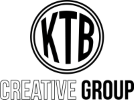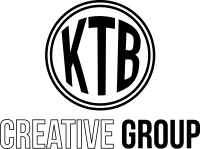Whether it’s in the barn or the office, choosing your client list is more than accepting every offer that walks in the door. When you’re just starting out, you may not have as much freedom to be selective with who fills your client list, but as soon as you can afford it – be picky!
Know Your Business
Before advertising your availability to new clients, you need to know your business inside and out. What services will you offer? What core values will influence the trajectory of your business decisions?
Whether you’re a marketing professional taking on companies to develop their brand, or a horse professional taking on new students and developing young horses, you can narrow down which clients will mesh with your program by:
- Demonstrating professionalism – We all know that first impressions matter, so when interacting with clients, it is important to behave in a kind and professional manner. You want to attract clients who will work well with you, so don’t put on a fake front. This is one of those situations where being yourself (in a professional capacity) can save you many headaches.
- Be clear with the services you provide – Create an exhaustive list of the services you’ll offer, so you can quickly turn away prospects asking for items you’re not capable or willing to provide.
- Knowing your worth – Research and determine acceptable rates for your services long before taking on clients. Not only should you be aware of the market rate of that service in your area, but you should also know what you need to charge to make your financial situation work. If you’re an organization with a set price list, share it with clients during your introductory meeting, so you aren’t losing time to clients who aren’t within that accessible range.
- Addressing availability – Your time and the resources at your disposal for managing clients should greatly influence who you add to your client list. To avoid burnout, you need to set limits for the amount of time you dedicate to work and be reasonable with your ability to take on additional responsibility.
While it can feel wrong to turn away business, if a potential client needs more time or resources than you have available, it won’t be fair to either of you to take on their workload and go over capacity.
Reach the Right Audience
Advertising for new clients can seem daunting, but it should be relatively simple once you know where to look. The more information you can put in your advertisement, the better. If you only have one or two very selective spots open, try reaching out to your network and finding clients through word of mouth. If you want to cast a larger net, social media platforms like Facebook, Instagram, and LinkedIn may be the best way to gather a wider pool of potential clients.
Before advertising in any capacity, be sure your web presence, including your website and social media platforms, is up-to-date. Clients will do their research before reaching out, and the last thing you want is for them to find inaccurate information about your company, or worse, nothing at all! If you don’t already have a web presence, check out these tips on creating a business website. While you don’t need to be active on all social channels (although it certainly helps), you should have some presence on several platforms. If you don’t have time to post yourself, hiring a social media manager can help give you the most bang for your buck.
Choose the Right Opportunities
By now, you should have your brand identity in place, making choosing the right clients simpler. The ideal client should be able to afford your rates, be willing to work with you to set goals and timelines, mesh well with your vision and work style, and seek services that are a part of your business plan.
There’s a lot to be said for the importance of finding clients who work well with you personality-wise, especially in the horse world. Not only are there a wide range of personalities in the equine industry, but you not only need the owner to fit into your program but the horse also should too!
Don’t Be Afraid to Fire Clients.
Many business owners struggle with knowing when and how to fire clients. In the case of the horse world, it could be that a horse is too dangerous for you to risk injuring yourself, or the owner is causing too much drama at your facility. For many reasons, some clients seem like they’ll be a good fit, but somewhere down the line, it becomes apparent that they need to go. So how do you know when to call it quits and how do you give them the news?
You’ll know when it’s time for a client to leave. Do you get a pit in your stomach whenever you have to meet with them? Are they suddenly demanding more time and resources than you agreed on or are capable of providing? Watch out for clients with these red flags:
- Frequently disrespect you or your employees
- Don’t respect your time
- Act unprofessionally
- Pay late or try to renegotiate fees after prior approval
- Don’t meet timelines or provide you with the tools you need to meet goals
- Constantly micro-manage your work
In some cases, communication can realign a client who may seem to be putting up red flags, but if a resolution can’t be made, it’s important not to drag your feet on removing them as a client. Here are a few tips:
- Don’t drag it out – Once you’ve made the decision to fire a client, don’t string them along until you both are exacerbated by dwindling contact and missed deadlines. Schedule a meeting to discuss the issue immediately.
- Give reasons- When possible, give reasons why you are terminating the relationship, but leave your emotions out of the explanation. Be straightforward in why you won’t be able to meet their expectations or why the relationship is no longer a good fit.
- Keep it professional – Be polite and calm during the discussion. If the client tries to start an argument, don’t take the bait! Keep the conversation about the business and the work.
- Finish on a good note – If possible, refer the client to another company that may be a better fit. Try not to leave the client hanging in the middle of a half-completed project or without the knowledge of where you are in the work.
With a good understanding of your business capabilities and a careful selection process, you can set yourself up for successful working relationships with the clients in your roster.



